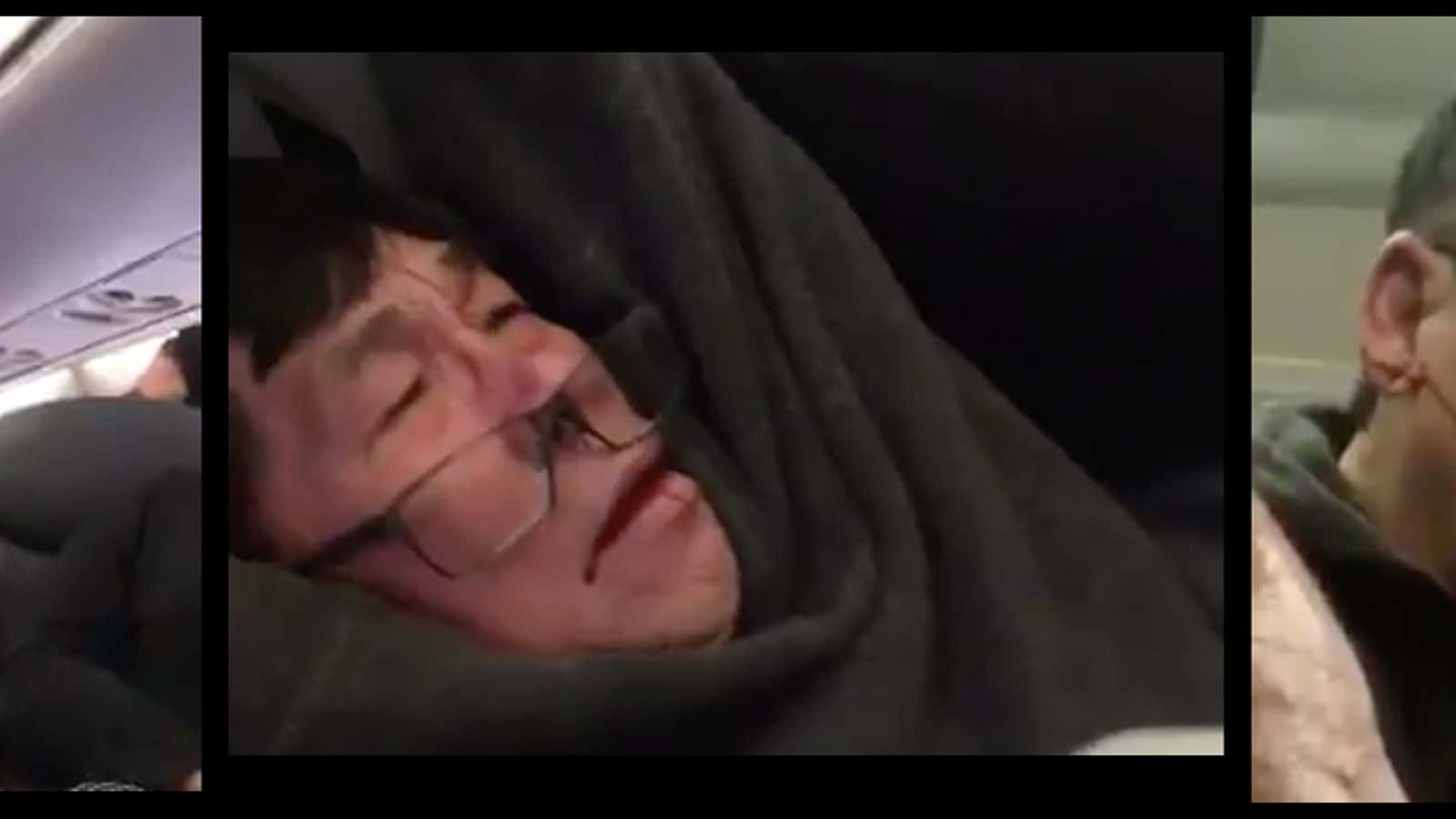United and its CEO Oscar Munoz are facing a wave of well-deserved outrage today for the airline’s handling over an overbooked flight last night, in which a man who refused to give up his seat on an overbooked plane was violently removed by airport security.
The unidentified man, whose ordeal was captured on smartphone cameras, is seen being brutally manhandled by a security officer, who pulled him from his seat and dragged him down the aisle. Subsequent photos showed the distraught passenger bleeding from the mouth.
It’s the latest in a long string of nightmares for flyers on United and other carriers—and it’s all too predictable given the industry’s razor-thin margins and frequently callous attitude toward its passengers. Here are a few questions and answers about how the ugly incident came to pass:
How often do airlines involuntarily bump passengers?
In the fourth quarter of 2016, United had 0.4 “involuntary denied boardings” per 10,000 passengers (pdf, pg. 33)—about the middle of the pack for US airlines.
Involuntary bumps are especially common when there are weather disruptions. United was trying to bump four passengers from the Chicago-Louisville flight on a day when there were storms throughout the Midwest.
Airlines are currently trying to operate with minimal extra capacity in their systems. That means they try to fill every seat—sometimes even selling the same seat twice—and resort to a series of financial incentives when there just aren’t enough. If cash payments fail, passengers are involuntarily bumped from their seats—usually just a metaphor, until the incident on Sunday.
How common is it to bump passengers when they’ve already been seated?
There’s no data on that specific category, but it’s most likely a small proportion of involuntary bumpings.
How can an airline let too many people onto a plane?
Clearly it would have been preferable to bump passengers before they boarded. Whether it was due to fault in its systems, human error, or a last-minute change in circumstances, United didn’t know just how badly it needed those four seats until after the passengers were seated.
Why do airlines prioritize crew over passengers?
Airlines often employ “just in time” deliveries of their flight crews to the proper airports. Without a flight crew in place, an airline can suffer from a rippling chain of delays and canceled flights.
In the case of United this weekend, it told passengers that it needed to make room for four of its employees. While we don’t know the details, it’s possible that if those four employees hadn’t made it aboard the Chicago-Louisville flight, an entire plane full of people wouldn’t have been able to take off the following day.
Sounds like quite a dilemma.
The airline may have faced a version of the ethical thought experiment known as the Trolley Problem: Is it worse to actively ruin the trips of four passengers, or, through inaction, allow hundreds of other travelers to be inconvenienced? (Obviously, the brutal treatment of the United passenger does not put the airline on firm moral ground.)
The stakes are even higher in the age of social media, when forcing seating passengers to leave the plane is a very bad look. And it’s even worse when an overly aggressive security guard manhandles a pleading passenger and violently deplanes him, and the airline’s CEO deploys the memorable euphemism “re-accommodating” to describe the incident.
How were the unlucky passengers selected?
That’s a question United will have to answer in the coming days. It’s possible the airline has an algorithm in its computer system that gives every passenger—from the super-platinum frequent flyer in business class to the zero-status peon who bought a discount fare—an unbiased, equal chance of being involuntarily bumped.
However, there are plenty of factors that an airline might also consider, like membership in a frequent flyer program. Airlines will got to ridiculous lengths to preserve the loyalty of regular business travelers who provide a large share of their profits, for example. And airlines also have a financial incentive to bump passengers who paid the lowest fare, since federal guidelines require bumped passengers to receive a multiple of the amount they spent to buy the ticket. Finally, passengers making connections to an international flight or a partner airline could be less likely to be bumped.
